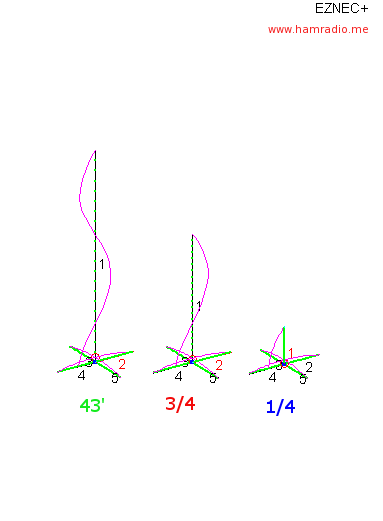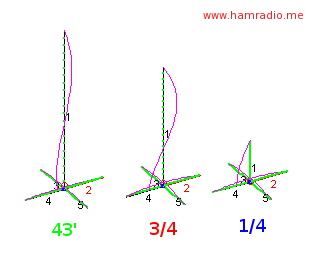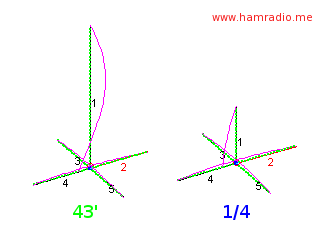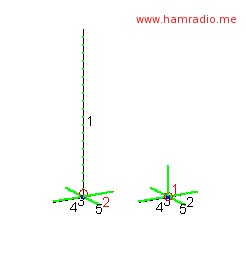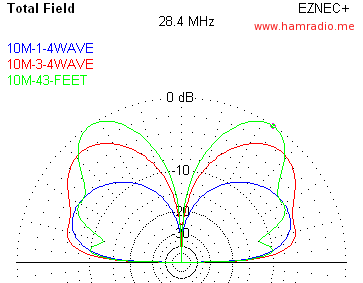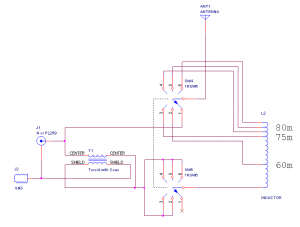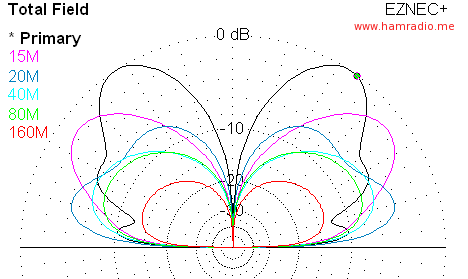Continuing our NEC Shootout between the 43 foot vertical available from DX Engineering or Zero Five and the adjustable height BigIR antenna available from SteppIR antennas we now analyze them in the 40 meter band.
Once again I pulled a model from the Cebik vertical collection for 40 meters. This time, instead of four radials it has six. Also surprising its the height if the vertical defined in the “wires” section. It is 36 feet high. This is four feet beyond the BigIR’s 32 feet height. The SWR for 36 feet was right in the middle of the 40 meter band. I changed the height to 32 feet, compared the plots and they were almost identical. So much relies on how well you design your ground system, this is a wild variable. However, the results are so similar, I left the length at 36 feet for the shootout.
Here are the two antennas with the current magnitudes at 7.15 MHz.
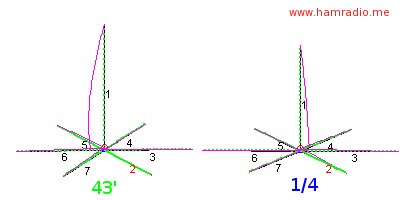
Once again, the 1/4 wave antenna’s currents are nil at the top and maximum at the bottom. Assuming you have a good radial system on the ground with low ground resistance this should be near the ideal of 36 ohms impedance. This results in a SWR of about 1.4 or so. The fact the BigIR’s 32 foot height won’t simulate a low SWR is probably the result of simulation artifacts. Either way this is good demonstration where the ideal SWR of 1:1, where the feed point impedance is 50 ohms and a good match for the coax, is not the ideal since this means you have 36 ohms antenna reactance (turns your RF into signal) + 14 ohms ground resistance (turns your RF into heat). That’s another story though.
Here is the plot…
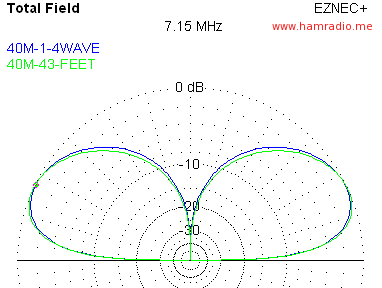
Hmmm, not that different… not that different at all. Points include:
- Both antennas show their best lobe of energy at about 27 degrees elevation at -0.5 dBi gain
- The 43 foot has just a little more higher current radiating portions of the antenna a little higher than the BigIR
- The SWR (at least for the 36 simulation model) is nice and low
- The SWR for the 43 foot is about 5:1 for 50 ohm feed and a respectable 3:1 using the 4:1 transformer
Neither is a clear winner. The good news is neither is a clear loser. They both do the job of getting radiating metal up in the air to make contacts.
The 43 foot antenna provides the potential for better efficiency since its impedance is much higher than the ground losses induced by the radial system. This suggests you might be able to get away with a worse radial system with less efficiency penalty… I still would put a lot of radials in since it is so easy to do.
Onward to 80 meters next…
